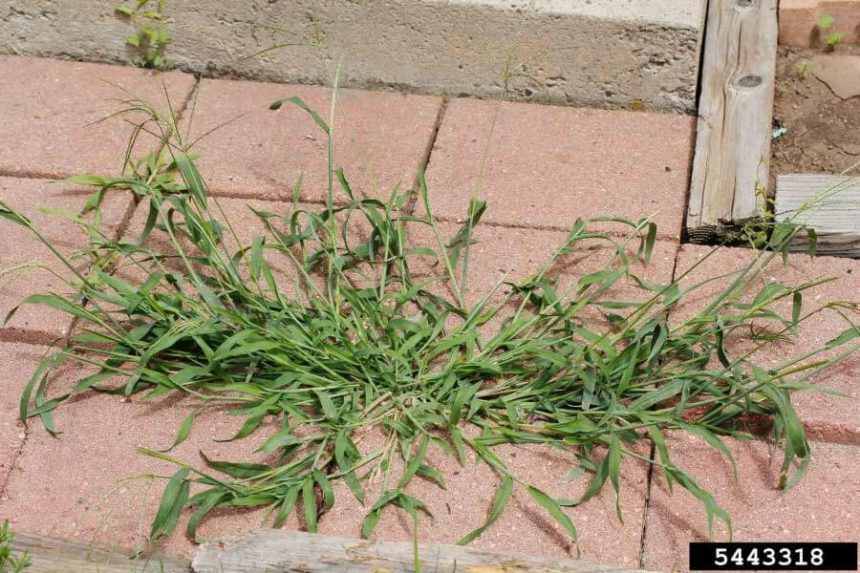Managing crabgrass in your lawn
Published at | Updated at
Crabgrass is a common and frustrating weed that can quickly overrun lawns, particularly in warm summer months. As a fast-growing annual grass, it thrives in thinning and stressed turf — outcompeting desirable grasses and living ugly patches in your lawn. Managing crabgrass effectively requires an integrated approach combining preventative measures, proper lawn care and targeted herbicide use. Understanding the lifecycle of crabgrass and implementing best practices for lawn maintenance can keep your lawn healthy, green and crabgrass free throughout the year.
The key to controlling crabgrass is disrupting its life cycle before it can reseed itself. Crabgrass is a warm-season annual grass, meaning that it completes its life cycle within one growing season. It typically germinates in late spring to early summer when the soil temperature consistently reaches 55°F. Once it germinates, crabgrass grows rapidly during the warm summer months, producing wide, sprawling leaves that crowd out desirable grasses. As the summer progresses, it flowers and produces seeds which can spread throughout the lawn. Crabgrass dies with the first frost leaving behind seeds to germinate the following spring.
Cultural control of crabgrass
A healthy lawn is more likely to compete with crabgrass than an unhealthy lawn. Creating a healthy lawn starts with proper maintenance practices that promote strong, dense turf growth. Regular mowing at the correct height, deep and infrequent watering, and balanced fertilization are essential to keep your grass vigorous and able to outcompete weeds like crabgrass. Aerating compacted soil, overseeding thin areas and choosing grass varieties suited to your climate further enhance lawn resilience. A healthy lawn is less susceptible to pests, diseases, and weed infestations — ensuring it stays lush and green year-round.
Chemical control of crabgrass
Chemical control of crabgrass can be highly effective when timed correctly. Pre-emergent herbicides — such as pendimethalin, prodiamine or dithiopyr — are applied in early spring before crabgrass seeds germinate, forming a barrier that prevents their growth.
Post-emergent herbicides — like quinclorac, fenoxaprop or mesotrione — can be used after crabgrass has emerged but is still young, targeting the weed directly. Both approaches, when combined with proper lawn care, help minimize crabgrass infestations and support a healthy, weed-free lawn.
When using herbicides to control crabgrass, it’s crucial to exercise caution to avoid unintended consequences. Pre-emergent herbicides form a barrier in the soil that prevents the germination of all seeds, not just crabgrass, which means they can also inhibit the growth of desirable new grass seeds if applied too early.
Post-emergent herbicides, while effective against existing crabgrass, can potentially damage other plants and lawn grasses if not used according to label instructions. Always read and follow the herbicide label carefully to ensure proper application rates and timing, protecting both your lawn and the surrounding vegetation from potential harm.
Effectively managing crabgrass involves a holistic strategy that merges cultural practices, diligent lawn care and selective herbicide use. By comprehending crabgrass’ life cycle and implementing a robust lawn maintenance routine, you can significantly reduce the likelihood of its invasion. Proper mowing, watering and fertilization are key to fostering a vigorous lawn that can outcompete crabgrass. When employing chemical controls, it’s important to follow application guidelines closely to safeguard your lawn and other plants from potential damage. Adopting these integrated approaches will help ensure your lawn remains healthy, lush and crabgrass-free throughout the year.

In the Garden is sponsored by ProPeat, which is dedicated to delivering solutions for any of your professional fertilization needs. Whether you need to reduce the harm to soils and the environment, or you're interested in the latest nitrogen, carbon and biochemical technologies, ProPeat is the perfect fit.



